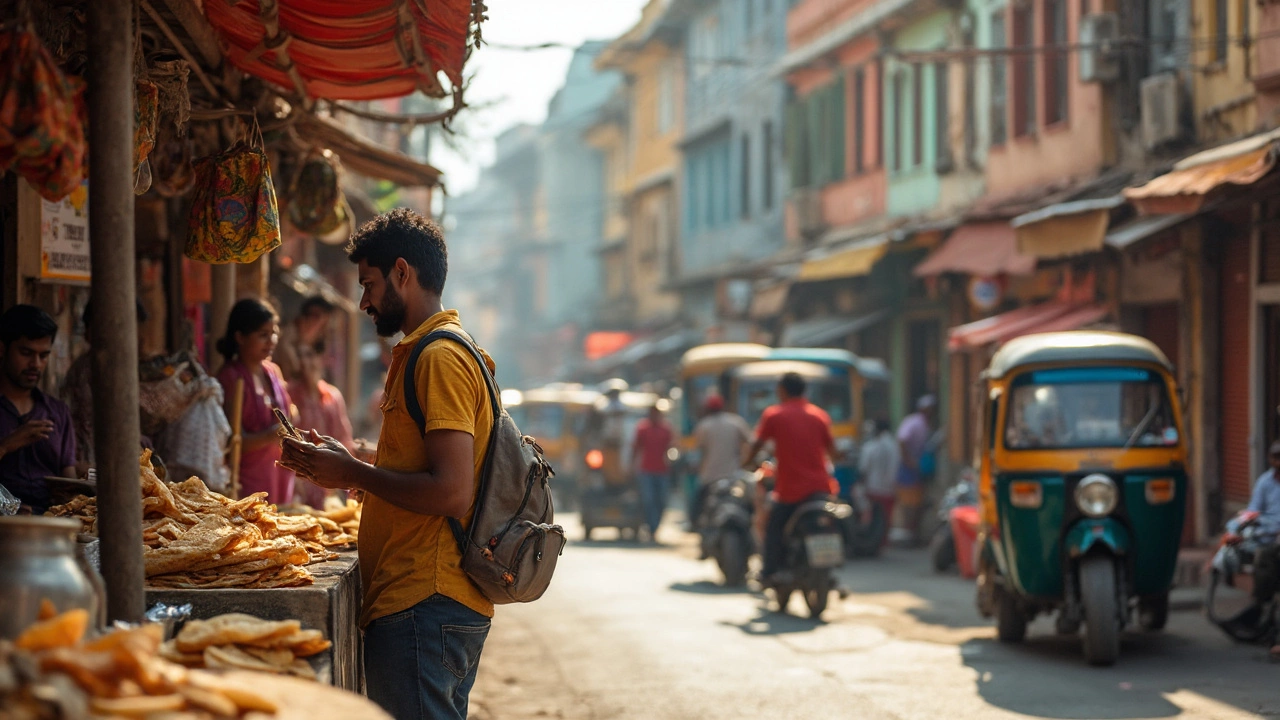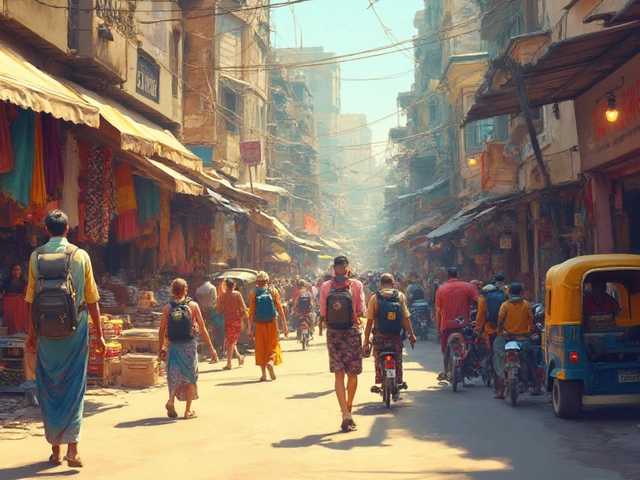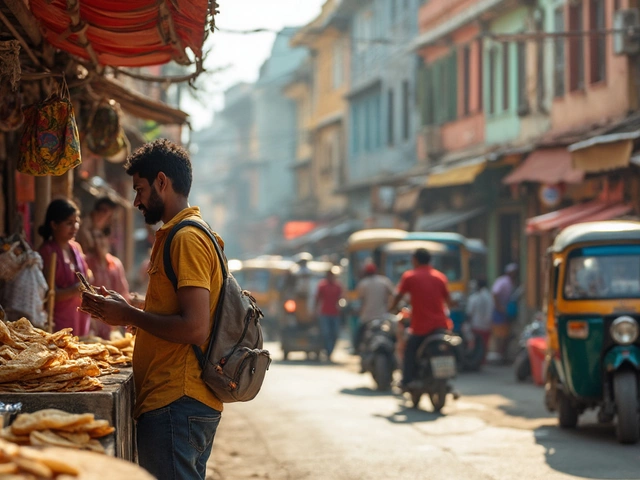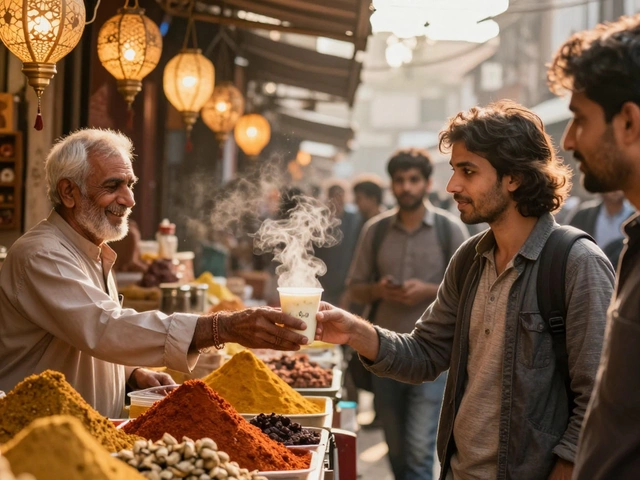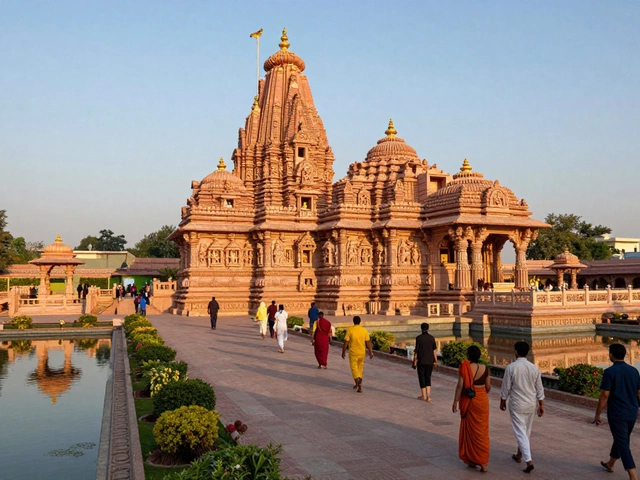Sticker shock isn’t something you’ll usually get when booking that flight to South India. People always ask: is India actually cheap to travel in, or is that just a myth from outdated guidebooks? Here’s the bottom line—your bank account will feel pretty happy in most places, especially if you know where to spend and where to save.
In South India, you can find a simple guesthouse for the price of a burger back home. Meals sometimes cost less than your daily coffee, especially if you eat at local mess halls instead of pricey hotel restaurants. Public buses and trains are budget-friendly, and even short rickshaw rides rarely break the bank—if you haggle the right way.
But don’t get too dreamy. Prices can sneak up if you’re into fancy hotels, Western cafes, or private cars—these spots charge way above what locals pay. It all comes down to choices. Love street food? Great, you’ll save loads. Prefer a boutique hotel with a sea view? You’ll pay for it, but hey, it’s still usually cheaper than a city break in Europe or the US.
- How Much Does South India Really Cost?
- Eating, Sleeping, and Getting Around
- Must-Know Money-Saving Tips
- Splurge or Save: Where to Spend
How Much Does South India Really Cost?
Let’s talk numbers because nothing’s worse than showing up on your trip only to be hit with surprise costs. South India is known for being one of the most wallet-friendly regions for travelers—yes, even in 2025. On a shoestring, expect to get by on as little as ₹1,200 to ₹2,000 a day (that’s about $14–$24 USD). If you want more comfort, think ₹3,000–₹6,000 daily ($36–$72 USD), which already feels plush by local standards.
Here’s what you might pay for common expenses in 2025:
| Expense | Budget | Mid-Range | High-End |
|---|---|---|---|
| Accommodation (per night, double) | ₹500–₹900 | ₹2,000–₹4,000 | ₹8,000+ |
| Local meals (per meal) | ₹60–₹150 | ₹250–₹500 | ₹1,000+ |
| Intercity train/bus | ₹200–₹800 | ₹1,200–₹2,000 (AC seat) | Private car: ₹3,000+ |
| Entrance to attractions | ₹50–₹200 | ₹300–₹600 | Special tours: ₹2,000+ |
The biggest savings? Staying in locally-owned guesthouses or hostels and eating where locals go. Don’t be fooled by shiny tourist traps—they might charge ten times the local rate for a dosa (South Indian pancake). Public transport, especially trains and state-run buses, keeps you moving for the price of a movie ticket.
If you’re counting every rupee, travel during off-peak months (like April to June) for deals on rooms and flights. Tourist hotspots like Kochi or Pondicherry charge more, while smaller towns still offer that classic low-cost vibe. And don’t skip the markets—souvenirs there are much cheaper than in airport shops.
At the end of the day, India travel costs in the south are whatever you make them. Know your priorities: spend less for street eats and shared rooms, splash out for air-con and private rides. Either way, your money goes a lot further here than most places.
Eating, Sleeping, and Getting Around
Food, beds, and transport make or break your budget—and in South India, you’re in luck. Let’s start with food. Grab a plate of dosa with sambar at a roadside stall, and you’ll pay less than ₹50 (about 60 cents USD). Even sit-down South Indian thali meals barely cross ₹150. You’ll spend way more at touristy hotels or international chains, but honestly, local joints are where the flavor and value shine.
| Item | Average Cost (INR) | Average Cost (USD, 2025) |
|---|---|---|
| Street food meal | ₹40-70 | $0.50-$0.85 |
| Mid-range restaurant | ₹200-400 | $2.40-$4.80 |
| Dorm bed (hostel) | ₹300-600 | $3.60-$7.20 |
| Budget hotel room | ₹800-1500 | $9.60-$18.00 |
| Local bus ride (city) | ₹10-25 | $0.12-$0.30 |
| Short rickshaw ride | ₹40-80 | $0.50-$1.00 |
| 2nd class train (100km) | ₹75-100 | $0.90-$1.20 |
Sleeping is just as budget-friendly. Hostels are popping up in cities like Kochi, Bangalore, and Pondicherry, usually with free Wi-Fi and AC. Private guesthouses start cheap outside big tourist spots. Cleanliness can be hit or miss, so look for recent reviews. For something special, you can splurge on a heritage homestay or a houseboat in Kerala without completely blowing your budget.
Getting around might sound complicated, but South India’s got you covered. City buses are super cheap and pretty reliable in bigger towns—just ask locals for the right route. Trains are the backbone for longer hauls, and tickets sell out fast in busy seasons, so book on IRCTC or through an agent. Rickshaws work well for short hops, just agree on a fare before you hop in. App cabs like Ola and Uber are in the major cities if you want a set price and air conditioning.
- Stick to local dishes if you want to really save money—and taste the best of South India.
- Check hostelworld.com or booking sites for real guest reviews before booking your bed.
- Book trains as soon as you have your dates set—they fill up super quickly, especially around holidays.
- If a rickshaw driver quotes you a flat fee, it’s usually higher than the meter, so there’s always room for polite negotiation.
The real magic here? India travel costs can be ridiculously low, if you stick even loosely to the routes locals take. There’s no need to rough it, unless you want to.
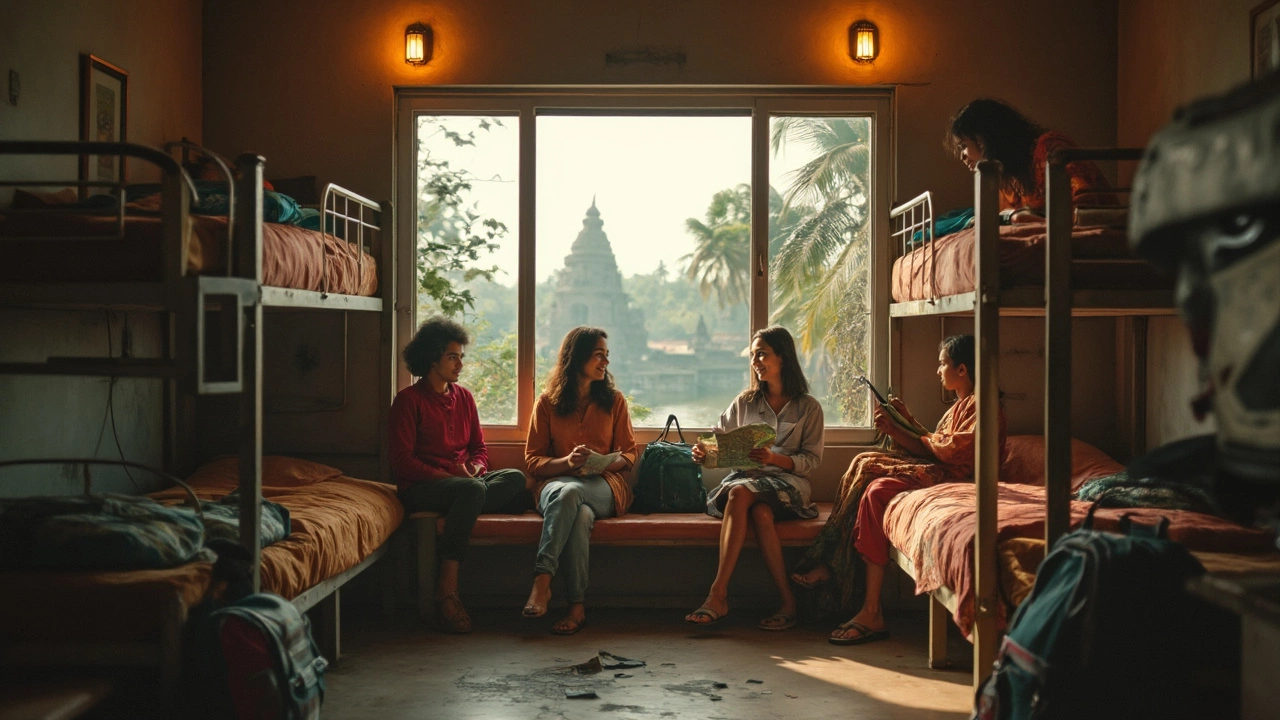
Must-Know Money-Saving Tips
If you want your rupees to last longer in South India, you need to know the local tricks. Tourists who wing it usually end up paying double for the same experience. Here’s how to avoid obvious money pits and stretch your budget.
- Use public transport as much as possible. Intercity buses and trains are cheap and run almost everywhere. For example, a second-class train ticket from Kochi to Bangalore (approx. 600 km) rarely goes above ₹400 (about $5). Local city buses cost even less, often under ₹20 (25 cents) per trip.
- Skip fancy restaurants unless it’s a special occasion. South Indian veg thalis (set meals) in average places cost around ₹60–₹120, and you’ll rarely leave hungry. In fact, eating at “mess” restaurants is where locals eat daily for a reason—it’s fast and filling.
- Don’t rely solely on cabs or rickshaws. Apps like Ola and Uber usually charge less than street hails, and you can check the price before you go anywhere. For short hauls, ask locals the usual fare; if the driver quotes something way higher, walk away.
- Bargain at markets, especially for souvenirs or textiles. Don’t be shy: haggling is normal! Usually, you can get prices down by 20–40% from the first quote.
- Go for guesthouses or homestays instead of hotels with international names. These places often include breakfast and Wi-Fi in the price. A decent guesthouse room: ₹700–₹1,200 a night.
If you want a quick look at prices, check out this table with budget basics for travelers:
| Item/Service | Average Cost (INR) | USD (approx.) |
|---|---|---|
| Guesthouse Room (per night) | 800 | 10 |
| Veg Thali Meal | 100 | 1.20 |
| Local Bus Ticket | 20 | 0.25 |
| Coffee/Tea at local shop | 20 | 0.25 |
| Short Rickshaw Ride | 80 | 1 |
| 2nd Class Train (Long Distance) | 400 | 5 |
The most important rule: pay attention to what locals pay. If you see a packed restaurant or bus, that’s usually the best sign you’ve found a true India travel costs bargain. And always count your change—being short-changed is still pretty common at bus stations and street food stalls.
Splurge or Save: Where to Spend
Figuring out when to open your wallet and when to grab the cheapest option matters if you want to get the most from your India travel costs. Let’s get straight to it.
Some experiences in South India are absolutely worth a little splurge. For example, a backwater houseboat tour in Kerala is classic—sure, you could stick to public ferries that cost pocket change, but spending extra for a night on a houseboat (about 7000–10,000 INR per couple) is special and comfy. A lot of travelers say it’s the highlight of their trip.
If you’re a foodie but worry about spending too much, don’t stress. Even at highly-rated restaurants in cities like Bengaluru or Kochi, a hearty meal rarely goes above 700 INR. Street food, on the other hand, usually costs between 30–100 INR. The contrast is real.
When it comes to sights, most major temples in South India are free, but some bigger tourist sights (like the Mysore Palace or Meenakshi Temple’s special entry) charge foreigners more—ticket prices often range from 150 to 500 INR. It’s not bank-breaking but does add up if you’re sightseeing daily.
"South India rewards travelers who try both ends of the scale—eat with the locals, then splurge for that one-in-a-lifetime experience."
– Lonely Planet India 2024 Guide
Here’s a quick breakdown of typical costs (in Indian Rupees per person):
| Experience | Shoe-string Price | Splurge Price |
|---|---|---|
| Guesthouse Room (per night) | 500–800 | 2500+ |
| Restaurant Meal | 100–200 | 700+ |
| Local Bus Ride | 10–30 | — |
| Taxi (city ride) | 250 | 700+ |
| Backwater Houseboat | — | 3500–7000 |
| Major Site Entry Fee | Free–50 | 150–500 |
If you need WiFi, air-conditioning, or want to try an Ayurveda massage, expect to pay extra. Ayurveda massages range wildly—budget options at small spas can be 700 INR, top-end places charge 3000 INR and up.
So, what’s the smart move? Save where you can try things like street food, ride trains, or stay in homestays. Splurge on the once-only stuff that will stick with you: a top-rated cooking class, wildlife safaris, or a houseboat night. You’ll remember those experiences way more than another generic hotel room.
